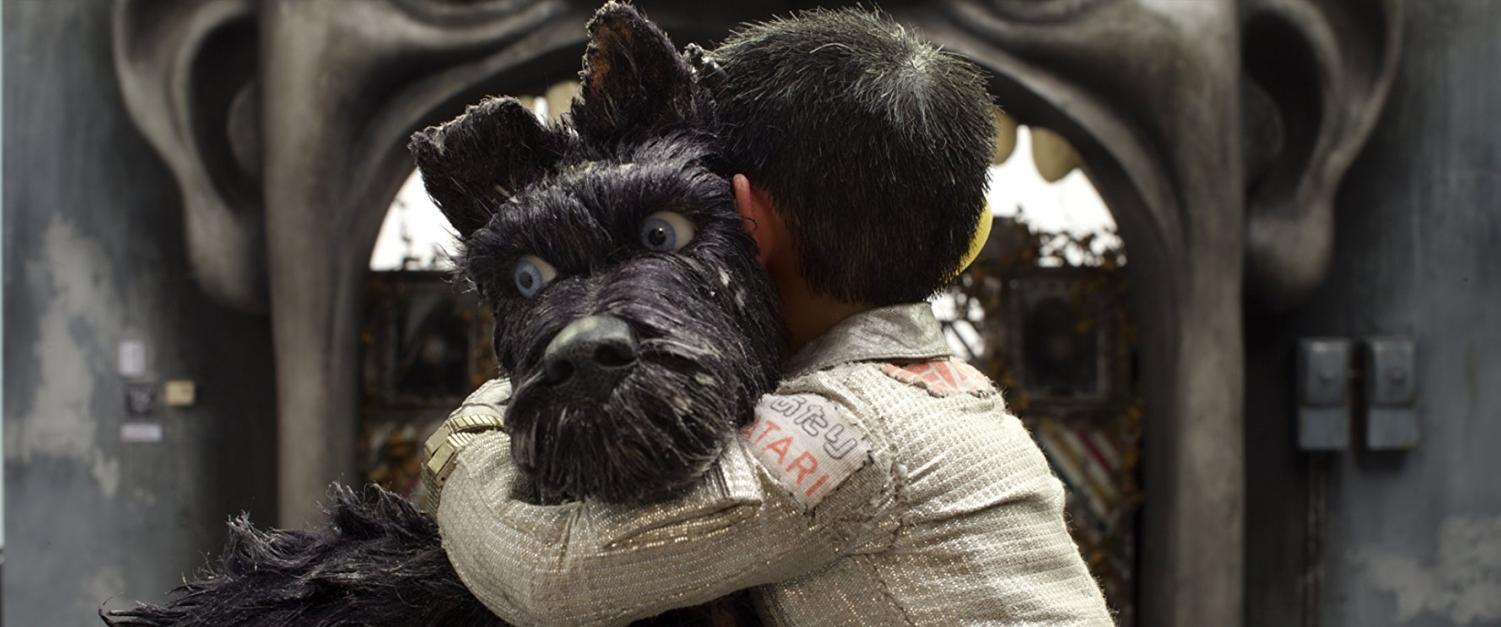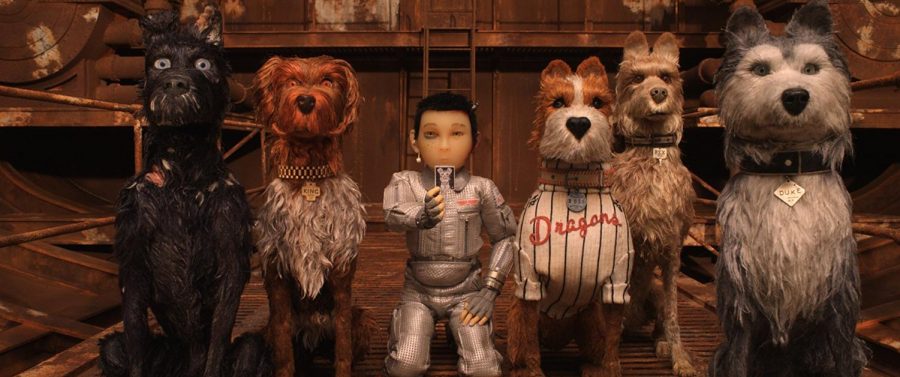“Isle of Dogs” is enjoyable, yet problematic fare
May 1, 2018
Most film buffs know what to expect going into a Wes Anderson film: deadpan delivery of lines, downplayed yet effective performances from a diverse ensemble of well-known actors, intricately detailed sets, pop songs from the 60-70’s and a nostalgic fascination with the past. Detractors are tired of these recurrent elements, while his fans view his work as using these established elements to explore a multitude of different themes and stories. I fall into the latter camp, thinking that Anderson’s witty humor and unique visual style make him one of the finest directors working today. My point with this introduction is that his films are very love-it or hate-it, and that I unabashedly love his work. The fact that I have such a large bias is just a disclaimer before going forward, as this will obviously affect my opinion on the film.
As we delve deeper into Anderson’s filmography, his style has only become more dense and multi-layered. This is definitely true of “Isle of Dogs.” The plot swings back and forth in time with the use of flashbacks. Simply put, the plot deals with an outbreak of a supposed “canine flu” in Japan, which leads the tyrannical mayor of Megasaki City to banish the dog population to the aptly named Trash Island. The dogs live in squalor on the Island, but the story spices up once a young pilot crash lands looking for his deported dog. In addition to this, conspiracy brews in Megasaki as scientists debate the validity of canine flu.
A unique group of actors headlines the film. The four leads, Bryan Cranston, Edward Norton, Jeff Goldblum and Bill Murray have laid back and dry tones in their voices that fit the canine roles of the film. There’s also a homely aspect to these performances that strangely fits. I can’t quite explain it, but there is a certain security in all of these actors banding together to play dogs. Cranston gives a standout performance as Chief, a stray dog whose character development drives the story. Surprisingly, Cranston has a real knack for comedy. He’s got a habit of being very earnest, which makes the comedy ring true in a strange yet endearing way.

The other actors all knock it out of the park as well. Many of the performers are top tier talent regardless of script quality, so it helps that Anderson is unflinching in his quirky characterizations. While many of the characters retain memorable traits or running gags, none of them feel fleshed out in the same way that Chief does. It feels as though Anderson and his screenwriters were trying to keep to a strict time limit. As such, while many of the supporting characters are enjoyable sketches, I left the theater wanting more from them.
I felt the same way at the ending. The pace rapidly picks up in the third act, only to end the film in a predictable way. This also does not derail the film. The humor, performances and style endure, but on the most basic level I felt a little let down. It was good, but I felt that it could have been more. The opening two acts of the film are full of little surprises and dark turns, so when the film ends in a rather rudimentary fashion, it’s bound to be disappointing. The third act of the script would have benefited from a rewrite, because the end of the film left me with a feeling of “that’s all?” rather than pure amazement.
There is also the problem of cultural appropriation and the portrayal of Japanese culture in the film. My verdict is that I’ve seen worse. The film clearly comes across as a tribute to this culture rather than an appropriation. But it is still discernibly from a white American’s perspective, peering in awe while still keeping a distance. We are by no means getting a realistic portrayal of Japanese culture. More so, we are treated to what it looks like through of the eyes of an American whose understanding of the culture comes primarily from films, manga/anime, video games et. all. I’m not saying this isn’t an important part of the culture, but there is so much more to it than that.
This distance is exemplified by the decision to keep all of the Japanese dialogue untranslated unless a conveniently placed translator or occasional subtitles are present. This is more than a little eyebrow raising. It mostly serves as a way for Anderson to deftly maneuver around facing issues of race head on. The barrier also becomes a hindrance to the characters at times. For example, I felt much less connected to the human lead, Atari, than I felt I should have because of the lack of subtitles for his character.
What people find offensive tends to be objective, or at the very least is difficult to gauge. While I can’t say that anything seems to be overtly offensive to me, there are certainly problems that can be picked up on in the way the film deals with its environment. This is made even more infuriating by the fact that there is no clear reason that the film needs to be set in Japan. There are ways that Anderson could have done the same story without clumsily attempting to represent a culture.

Despite any qualms I may have with the film, being a Wes Anderson picture, you can count on beautifully detailed imagery in every frame. This story especially feeds his world-building urges. He creates a rich backstory for the film’s world that calls upon a couple other unique animation techniques including a style that channels anime. The variety of angles and shot styles is as diverse as ever, displaying that Anderson still has tricks up his sleeve. Twenty-two years into his career, his visual sensibilities have grown more finely-tuned and complicated. As with his previous works, the film will demand repeat viewings to catch all of the small details concealed in each shot.
“Isle of Dogs” is a well-made film full of great performances, dry wit and fascinating cinematography. It’s everything you could expect from Anderson at this point. Despite that, it seems to be missing that extra amount of pathos that makes his earlier films so endearing upon rewatch. That said, the film is still above just about everything else that is out today in the animation field. Where else can you get such painstakingly framed and laid out shots? As well as the offbeat story and humor? Being Anderson, it’s still a unique experience, just one that isn’t on par with his past work. If this is a weaker installment, then it only speaks to how strong the rest of his output is.






